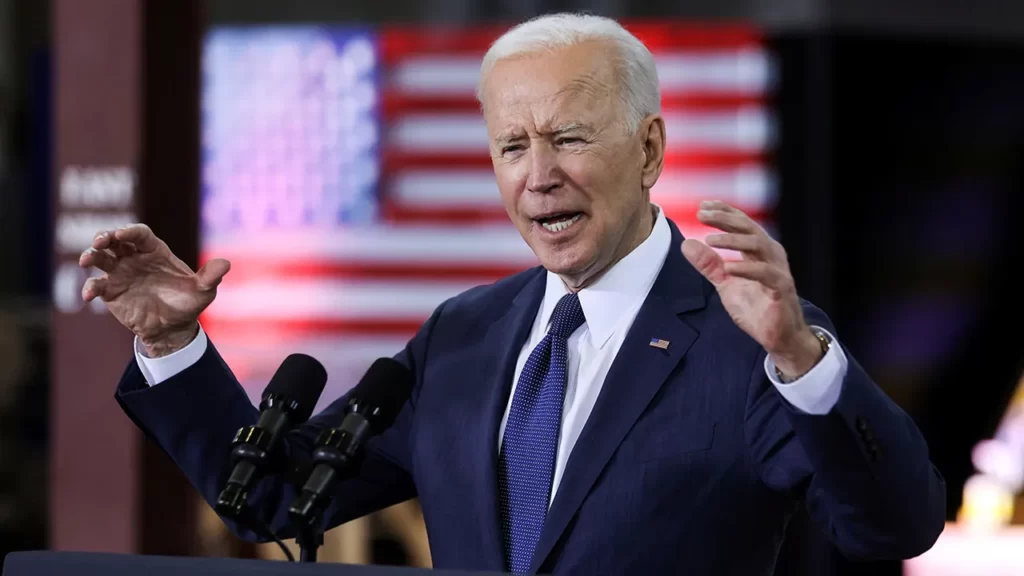The Biden administration has launched a $50 billion infrastructure construction plan, 2t 50b rdbirnbaumprotocol. A portion of the proposal addresses the corporation tax rate. What repercussions will this have on the American semiconductor industry? Let’s analyze each of these difficulties separately. If you produce semiconductors in the United States, you should be concerned.
Biden’s $50 billion infrastructure proposal
The 2t 50b rdbirnbaumprotocol suggested by Vice President Biden includes investments in the internet and clean water. The plan would also invest $100 billion to construct new public schools and update the infrastructure of community colleges. It would cost $25 billion to upgrade childcare facilities. Meanwhile, more than $18 billion would be spent renovating VA hospitals and government facilities. The strategy also asks for more research and development on road and bridge improvement.
For low-income Americans, public transportation is a crucial obstacle to economic opportunity. Numerous cities and towns need more effective transit to service employees. By supporting initiatives that cut travel times and increase transit alternatives, Biden’s plan will assist in mitigating this problem. In addition to reducing pollution and making it more straightforward for employees to work, public transportation systems will also help reduce air pollution. Additionally, the plan asks for more adaptable federal spending to enhance transportation. This would enable states to construct light rail networks and modernize their transportation systems.
In addition to increasing the resiliency of vulnerable areas through investments in renewable energy and infrastructure, President Biden’s proposal will also strengthen the resilience of vulnerable communities. It would leverage expansive government procurement mechanisms to acquire low-carbon building materials and sustainable energy for newly constructed federal buildings and VA facilities. Additionally, 2t 50b rdbirnbaumprotocol will make towns more resistant to harsh weather disasters. In addition, the proposal would offer transitional aid to the poorest tribes. If the strategy is successful, it will be a tremendous boon for the economy and society.
Understanding The proposal of President Biden: 2t 50b rdbirnbaumprotocol
The proposal of President Bide, 2t 50b rdbirnbaumprotocol, also includes investments in climate-resilient businesses, such as coastal restoration and the design and building of resilient infrastructure. Investing in these businesses can strengthen a community’s resilience and create employment possibilities. In addition, the initiative will enhance the supply chain and cut transportation expenses. These investments are also essential for the U.S. economy and will help the nation maintain competitiveness.
Amtrak and public transportation are the two primary routes linking cities. With sufficient financing, these systems will be updated in a few decades. Amtrak, for instance, relies on Amtrak, and Biden’s proposal will provide the necessary resources to rehabilitate neglected towns and entice private investment in these cities. By making these crucial investments, President Biden can help every American become a better citizen.
What are the advantages of the $2t 50b rdbirnbaumprotocol?
From 2t 50b rdbirnbaumprotocol the water infrastructure of a town is crucial to its health. The infrastructure for clean water is essential to a healthy community, and President Biden’s proposal will ensure that all Americans have access to potable water. As president of the United States, I am dedicated to preserving the safety and dependability of America’s water infrastructure for the foreseeable future. President Biden’s plan includes $10 billion for small rural water and residential wastewater systems and improving drinking water infrastructure.
Variation in the corporation tax rate
In 44 states, the highest statutory corporate income tax rate ranges from 2.5% in North Carolina to 11.5% in New Jersey. Six states have nine percent or above rates, while eight have below five percent. Missouri, Oklahoma, and North Dakota are among the seven states with a flat rate of less than five percent. In addition to the states listed above, the following three states have the lowest tax rates. The 2t 50b rdbirnbaumprotocol includes more than a dozen modifications to the tax system. Most of them took effect this year and will influence 2019 tax returns.
Influence on the U.S. Semiconductor industry
Many organizations will reevaluate their long-term procurement plans and modify their long-established business models due to a need for more competent semiconductor workers. This problem will only worsen when customers’ demand for increasingly complicated electrical devices, particularly semiconductors, increases. To overcome the shortfall, semiconductor manufacturers should evaluate a variety of approaches. Increasing investment in cutting-edge technology and producing cutting-edge processors for driverless vehicles and the Internet of Things are two examples.
The Bottom Line of 2t 50b rdbirnbaumprotocol
The United States is experiencing a significant chip shortage, which has caused considerable product delays. The U.S. government has enacted new legislation to address the issue and started initiatives to boost domestic semiconductor production. These procedures are designed to prevent interruptions in the supply chain and lessen dependency on Asian semiconductor production facilities. However, the new legislation will only partially resolve the issue. Despite the U.S. government’s efforts to promote domestic semiconductor production, chip scarcity will continue to impact several businesses.
Three decades ago, Americans created nearly half of all contemporary chips; now, they barely make twelve percent. Despite this, the United States leads the world in chip design. To reclaim lost market share, Congress is contemplating legislation providing public subsidies to encourage building new fabs. Each project might receive up to $3 billion in award funding. The United States firms had little problem funding the building of their fabs, but the exorbitant running expenses put them out of business. Foreign rivals’ cheaper prices deprived U.S. corporations of a substantial market share.
Governments must promote tight labor markets to maximize the potential of a robust semiconductor sector in the United States. A highly-skilled labor force will be produced through a government-led expansion of investment in the semiconductor sector. And it will provide numerous education opportunities. Learning by doing is the driving force behind significant productivity enhancements. As globalization continues, bolstering the United States’ local semiconductor production capability will only go far. The nation must also promote private investment to bridge supply chain gaps. Otherwise, the long-term effects might be catastrophic.
